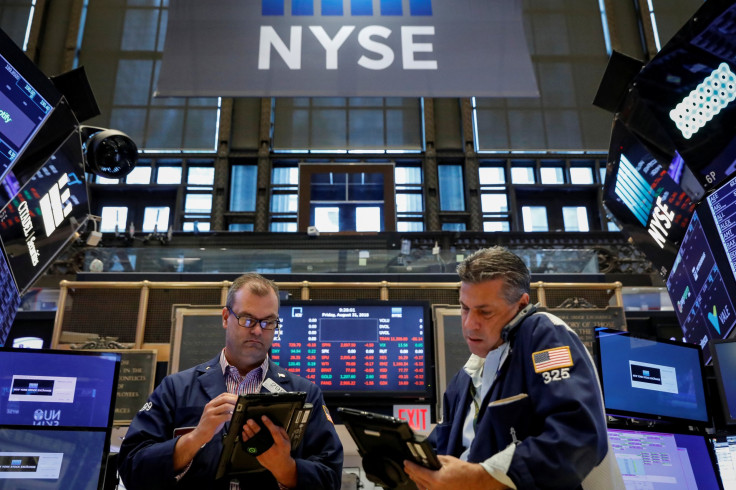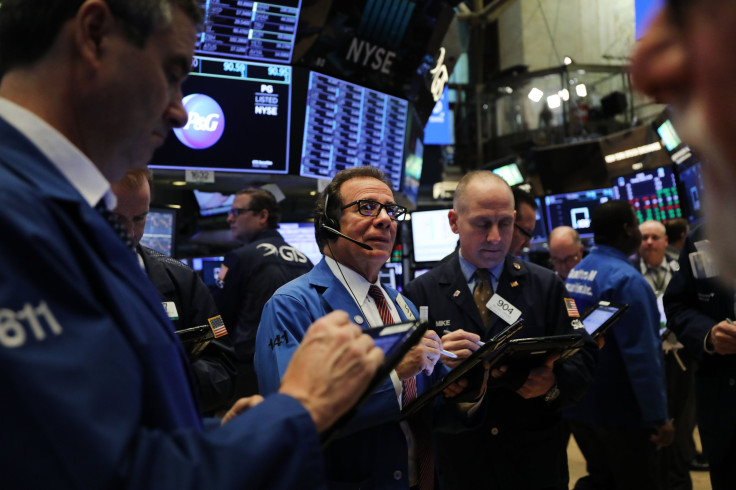When Markets Send Conflicting Signals, ‘Bond Markets Usually Have It Right’: Carlos Dominguez

Conflicting signals emanating from the stock and bond markets have investors caught in a bind, Carlos Dominguez, president and chief investment officer at Element Pointe Advisors told International Business Times.
Dominguez said the cross-currents in the markets are making it difficult to see which market will get it right. “The bond market is telling you that growth and inflation are really going to be hard to find, and yet the equity market is telling you everything's great,” he said.
“Historically, when the equity markets and the bond markets disagree, the bond markets usually have it right. It's just the timing that is in question,” he added. “I start to think about the timing and what's happening beneath the surface of the equity market to get a better sense for when that timing is right.”
The S&P 500 index touched new record highs in June, and the yield on the benchmark 10-year Treasury note dropped below 2 percent for the first time since 2016.
The S&P 500 index was last trading at 2,981.34 Wednesday. The yield on the benchmark 10-year Treasury note was at 1.95 percent.
Dominguez said the spread between 10-year and 3-month Treasury yields has been flashing recession signs from about a month ago when it inverted. But the 10-2 year Treasury yield spread has been contradicting this and is moving further away from inversion.
“So there's a lot of cross-currents going on and it’s tough to see who's going to be right or not,” he said.
Dominquez said the market is being “driven by liquidity” and the old adage “don’t fight the Fed” is back as the cornerstone of investment strategy, especially after central bank officials hinted at a rate cut if there is a need.
Reiterating a stronger case for a rate cut, Federal Reserve Chairman Jerome Powell recently said, “crosscurrents have reemerged, with apparent progress on trade turning to greater uncertainty and with incoming data raising renewed concerns about the strength of the global economy.”
Dominquez said the current scenario reminds him of the 1990s economic environment where the Fed stepped in and cut insurance rates to support the economy. “History doesn't really repeat itself but it does rhyme. Not surprisingly, in 1998 we had one of those insurance cuts that the market went on to do great for two years after that.”
The so-called insurance rate cuts by the Fed were rate cuts used as a policy easing measure to ensure economic expansion or for soft-landing in cases of recession. The rate cut in 1998 by the Fed was an insurance against recession during the financial market turmoil.

MARKETS HAVE TOPPED AND TECH BUBBLE IS A WORRY
Dominquez said the stock markets have topped and the broader indexes are not keeping up with the large caps.
He said market tops are a process that usually takes between 12 and 18 months. The process is already underway, and started late August or September of 2018, he said. “We are arguably 8, 9, 10 months into this. Usually, it's a process that takes 12 to 18 months -- I'd say we're definitely far along into it, but there can definitely be another few quarters as well.”
The markets are already showing signs of vulnerability, Dominquez said, adding that it just needs a catalyst to spark a selloff. “The potential catalyst could be certainly a geopolitical mistake whether it be a war with Iran or China trade war that flies out of control,” he added.
He is also concerned about a bubble that is brewing in the technology sector that may burst and spell doom for the broader market.
The S&P 500 hit an all-time high this week, but the small-cap index in the U.S. -- Russell 2000 index -- is still lower than the highs it hit last August.
The Russell 2000 made an all-time high of 1,740 at the end of August 2018. The index traded at around 1,565.14 Wednesday -- roughly 10 percent off of its high.
The Mid Cap index -- S&P midcap 400 index -- recorded a high of 2,053 in August last year but is down around 5 percent from those levels. The index last traded at 1,955.01.
“These much broader indexes are not keeping up with the large caps, the S&P 500 and that’s the kind of behavior that you see toward the end of a bull market -- where there's increasing selectivity and so all the headlines make people feel great that markets are doing great. When you look beneath the surface, there's evidence of some weakness that's not being picked up by the news press,” he said.
Apart from tech stocks, Dominguez said defensive stocks including consumer staples, real estate, utilities have been leading the market.
NEED FOR GOLD
Dominguez said gold has emerged as one of the favorable bets. The bullion has scaled a new multi-year high in the recent past and is closing in on 5-year highs. If it crosses this level he thinks “there's really not a lot to stop it from going to 1,800’s.”
Gold last traded at $1,423.80 an ounce on Wednesday.
He thinks the uncertainty and political tensions emphasize the need for safe-haven assets such as gold irrespective of the bond market’s indication that interest rates will remain low for a long time.
“We are overweight gold,” he said. “We went overweight gold earlier this year. For the first part of the year, it started out pretty well but then it went sideways to down, but now it's reasserted itself and we're not surprised by that.”
© Copyright IBTimes 2025. All rights reserved.





















